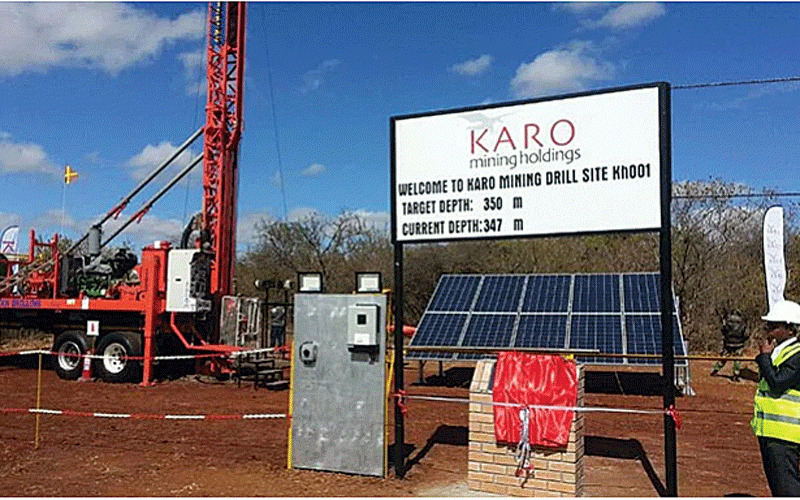
THE Zimbabwe Mercantile Exchange (ZMX) says the value of warehouse receipts issued since its launch now amounts to US$171,7 million as trades continue to increase on the platform.
The total value of warehouse receipts represents 435 203,34 metric tonnes (MT) of commodities having been traded on the exchange for a value of US$5 410 278.
ZMX was launched on October 18, 2021, and operates an electronic warehouse receipt system (WRS) and a commodity trading platform for the trading and financing of agricultural commodities.
WRS enables commodity holders like farmers to deposit their commodities with a designated warehouse in exchange for a receipt, which is a negotiable instrument that can be used as collateral for credit facilities or for spot trading.
ZMX is operated by the Financial Securities Exchange and was founded as a joint venture between it, TSL Limited, CBZ representing the private sector and government.
ZMX chief executive officer Collen Tapfumaneyi told Standardbusiness that ZMX continued to on-board more financiers on the exchange critical for the warehouse receipt financing.
Tapfumaneyi said engagements were ongoing with input suppliers such as seed, fertiliser, chemical and machinery suppliers on the utilisation of the warehouse receipts and the now operational commodity fund.
“Plans are at a very advanced stage to add or list more commodities on the Zimbabwe Mercantile Exchange trading platform,” he said.
- Zim Mercantile Exchange: Revolutionising agricultural trading
- Commodities exchange offers farmers relief
- Demand for maize firms as El Niño looms
- ZMX warehouse receipts value reach US$171.7 m
Keep Reading
“The ZMX intends to list cotton and its by-products like cotton lint and ginned cotton seed on its trading platform.
“The Zimbabwe Mercantile Exchange has also commenced issuing warehouse receipts for maize seed.
“Engagements are ongoing on how other input suppliers are to be on-boarded on the Exchange.
“The approval to have hitherto controlled grains to be on boarded on the ZMX and stored in ZMX warehouses was a game changer.
“The ZMX also now boasts more commodities eligible for trading on the exchange.”
Tapfumaneyi said the number of ZMX registered warehouses had risen to 37 across the country with the inclusion of warehouses under cotton firm, Cottco.
“To date, the value of warehouse receipts issued amounts to US$171 725 252 for a grand total of 435 203,34 metric tonnes (mt) of commodities. For 2024, 14 105,09 mtof commodities have been traded on the exchange for a value of US$5 410 278,60,” he said.
The ZMX boss, however, said there have been challenges relating to making the market understand what the platform was created for and the intended uptake by stakeholders, but added that massive awareness campaigns had seen farmers, traders, warehouse operators, and financiers coming on board.
“The El Nino induced drought affecting this agricultural season negatively impacted our operations in terms of supply of commodities. However, this situation has given rise to the need to rely on grain imports to offset the local supply deficit,” Tapfumaneyi said.
“Fluctuating and rising regional and international grain prices are also impacting steady supply and also affecting demand as the landing costs affect uptake from local consumers and off-takers.”
He said the ZMX expected an improved operating environment in the next agricultural marketing season due to the predicted favourable rain season for the country and region.
“The ZMX utilises a warehouse receipts system to enable farmers or holders to deposit their commodity with a designated warehouse in exchange for a warehouse receipt and also provides an automated platform where commodities are traded for immediate delivery, which also provides real-time market data on commodity prices, -price trends, bids and offers, trading volumes and values,” Tapfumaneyi added.










